Explore cultural diversity with kids by getting our printable paper dolls ready for school and dressing them up in a variety of school uniforms around the world!
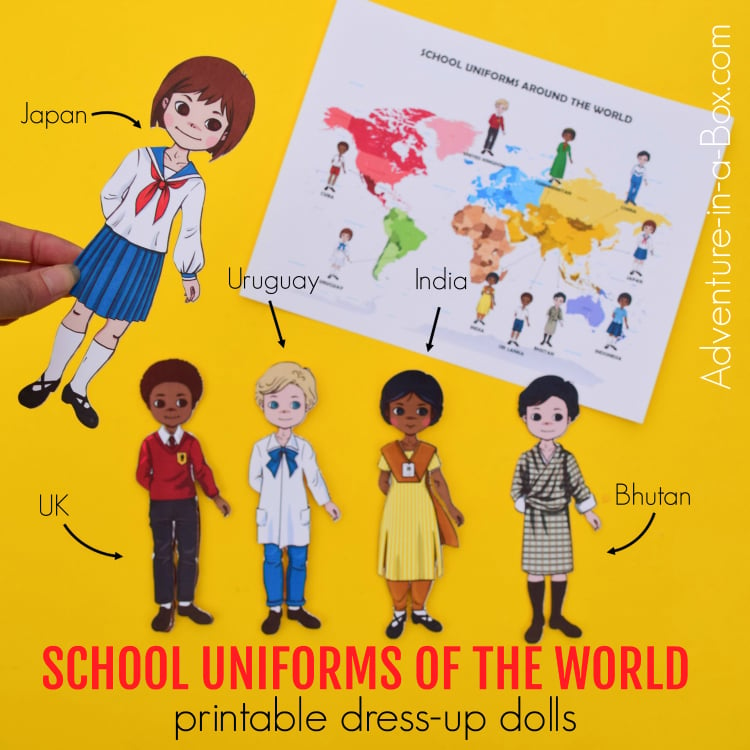
It is always fascinating to learn what is different about life in other parts of the world. Ever since I was a kid, I loved pouring over atlases and geography books. Unfortunately, while pretty knowledgeable as far as matters of minerals and climate were concerned, my old books couldn’t give me a satisfactory answer about those questions that really interested me. What do kids in those places like to do in their free time? How do they get to school? What do they have for breakfast? An overview is certainly important, but details also matter in getting a vivid picture of life in other places – they help relate to other people.
We’re starting another school year soon. Partly because of our tradition to celebrate with art, and partly because I find it interesting and important to talk with my kids about what it’s like to live in different countries, I wanted to make a set of paper dolls that would include kids going to school around the world. I ended up making two sets. First, I created paper dolls that portrayed local North American kids. Here in Canada and across the border in the USA, most children don’t wear uniforms to schools. But there are plenty of countries that make common use of school uniforms! I wanted to include one or two school uniforms, as I had vague notions from British boarding school movies and Japanese dramas… But when I started researching it, I was immediately fascinated by the variety of school uniforms around the world. They were all so different, and yet they were all very interesting, each with a history of its own.
I ended up making twenty school uniforms, and even at that, it was a hard choice to narrow them down!

About the Printable Paper Dolls in School Uniforms
The set includes:
- Ten countries: Great Britain, China, Japan, India, Cuba, Bhutan, Sri Lanka, Indonesia, Turkmenistan, and Uruguay.
- Twenty costumes: Each of the countries comes with two costumes, one for boys and one for girls. Of the ten countries in the set, only the Chinese school uniform is unisex, while the rest are either fairly different or strikingly different for boys and girls. Check Turkmenistan if you want the latter! All the costumes come both in full-colour and colour-your-own versions.
- Cards with information about school uniforms in different countries, along with some fun facts and historical trivia.
- Nine dolls: Five full-colour paper dolls and four colour-your-own paper dolls.
- Map of the world with all the countries marked.
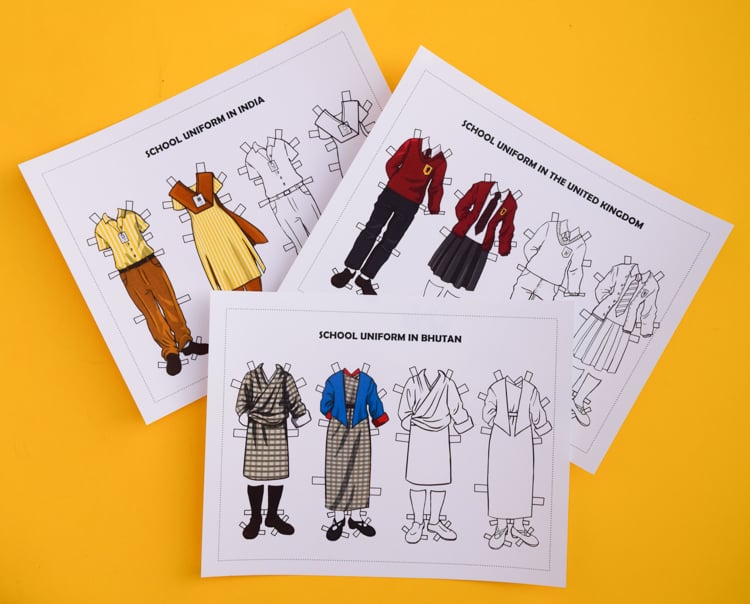
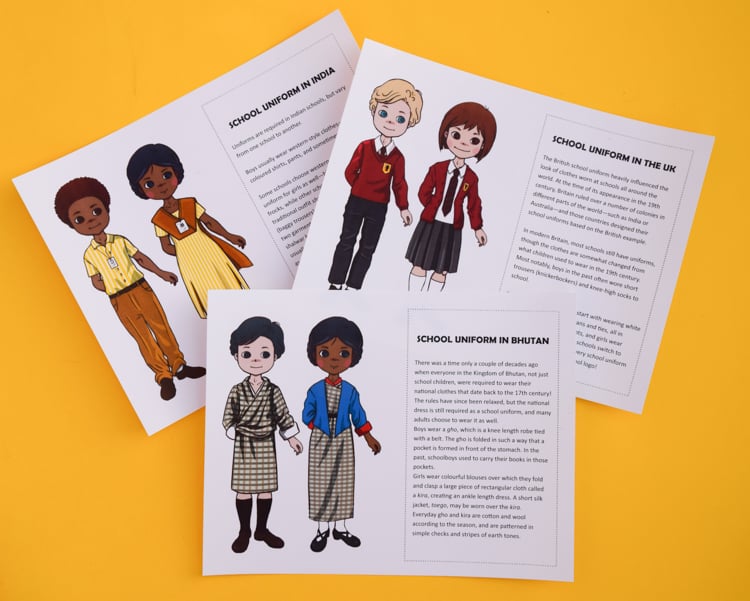
>>> Get the Paper Dolls Here! <<<
Cut the dolls from the pages with the base dolls. Cut the clothes out, using scissors or a hobby knife. With this pack, you can make either a classic paper doll with the paper layers that attach with folding tabs, or you can make a magnetic doll to go on a fridge or magnetic board. In order to make the doll magnetic, you can either print it on special magnetic sheets OR print it on standard paper and adhere little strips of magnet tape to the back. For extra long life, laminate the clothes and the dolls before gluing magnets to them.
About School Uniforms Around the World
In theory, school uniforms promote social equality as well as a sense of unity among students. At the same time, they are criticized for taking a certain independence and freedom of self-expression away from students. Depending on the policy, school uniforms can make education either more or less accessible for children from poor families. Some governments provide school uniforms to all children or make it so that they are available inexpensively. Conversely, there are countries where children are not allowed to go to school unless their parents can afford to pay for a school uniform or set of uniforms.
The debate aside, school uniforms are a familiar part of many students’ everyday routine. While the routine may often look the same—get up, get dressed, go to school—the uniforms certainly don’t! From traditional clothes in Bhutan to sport suits in China, from white dust smocks in Uruguay to sailor suits in Japan — school uniforms reflect the amazing diversity of culture around the world.
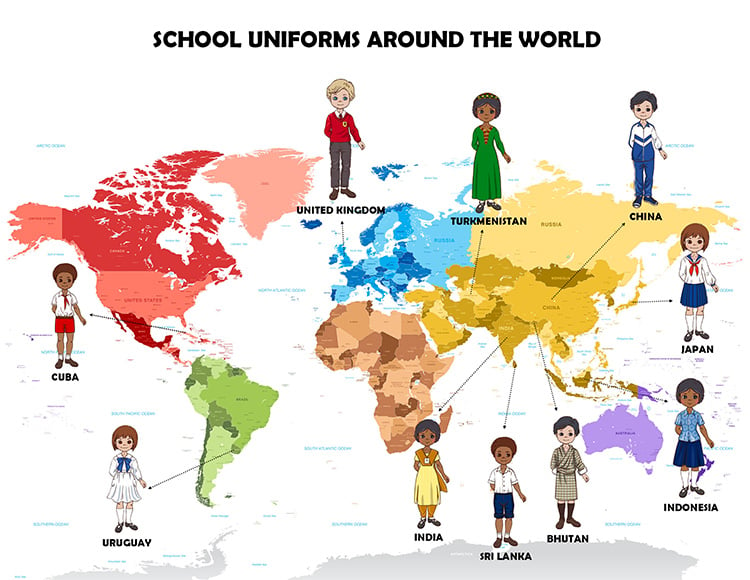
School Uniforms in Great Britain and India
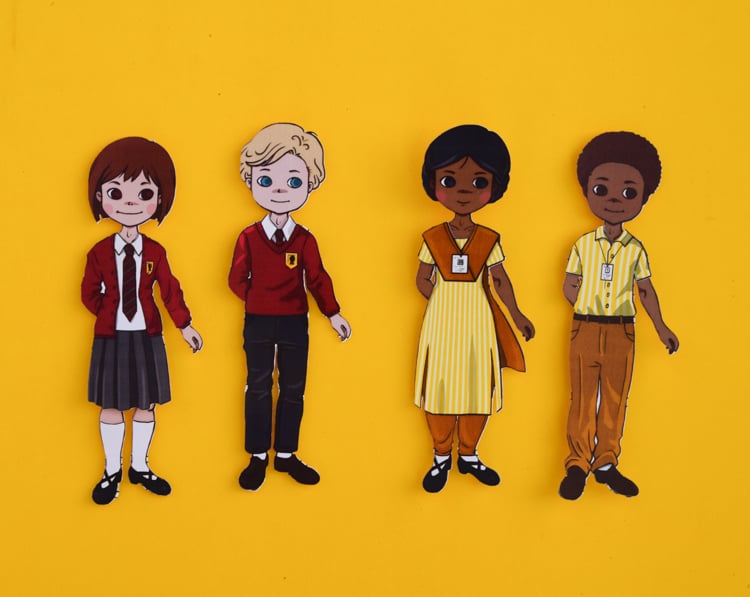
The British school uniform is on the left, and the Indian school uniform is on the right.
In the past, the British school uniform had a chance to influence the look of clothes worn at schools all around the world. At the time of its appearance in the 19th century, Britain ruled over a number of colonies in different parts of the world—such as India or Australia—and those countries designed their school uniforms based on the British example.
Up to this day, boys in India wear western-style clothes as a school uniform. It’s a little different for girls. Some schools require western-style clothes as well, while other schools give preference to the traditional outfit shalvar kameez. The shalwar (baggy trousers) and the kameez (long tunic) are two garments which are combined to form the shalwar kameez. The dupatta (a long scarf) is also usually worn with the kameez.
The styles and colours of clothes differ from one school to another in both countries.
School Uniforms in Bhutan and Turkmenistan
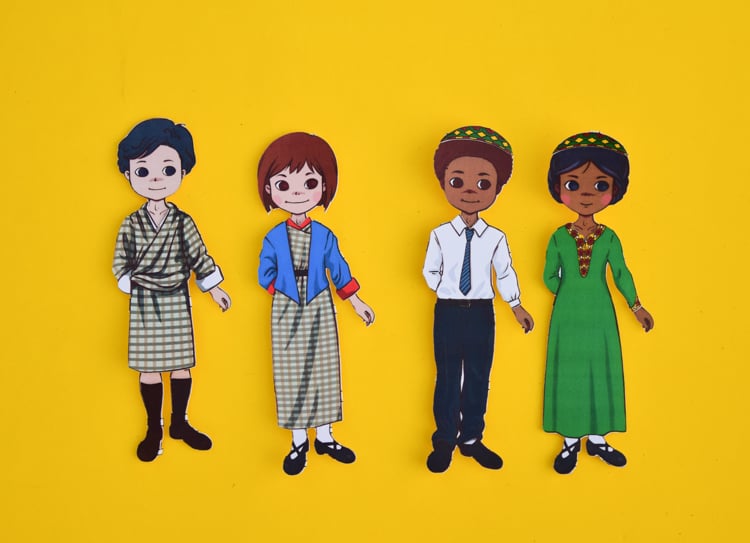
The school uniform of Bhutan is on the left, and the school uniform of Turkmenistan is on the right.
When choosing a school uniform, both of these countries gave preference to traditional clothes.
Actually, there was a time only a couple of decades ago when everyone in the Kingdom of Bhutan, not just school children, were required to wear their national clothes that date back to the 17th century!
The rules have since been relaxed, but the national dress is still required as a school uniform, and many adults choose to wear it as well. Boys wear a gho, which is a knee length robe tied with a belt. The gho is folded in such a way that a pocket is formed in front of the stomach. In the past, schoolboys used to carry their books in those pockets. Girls wear colourful blouses over which they fold and clasp a large piece of rectangular cloth called a kira, creating an ankle length dress. A short silk jacket, toego, may be worn over the kira.
In Turkmenistan, boys come to school dressed in trousers and white shirts with ties, not unlike many adults going to work in different parts of the world. Girls, however, wear a national dress with beautiful traditional embroidery. Both boys and girls wear traditional caps named takhya. The takhya is not only a form of head wear but is also considered a symbol of Turkmen identity and tradition.
School Uniforms in Japan and Indonesia
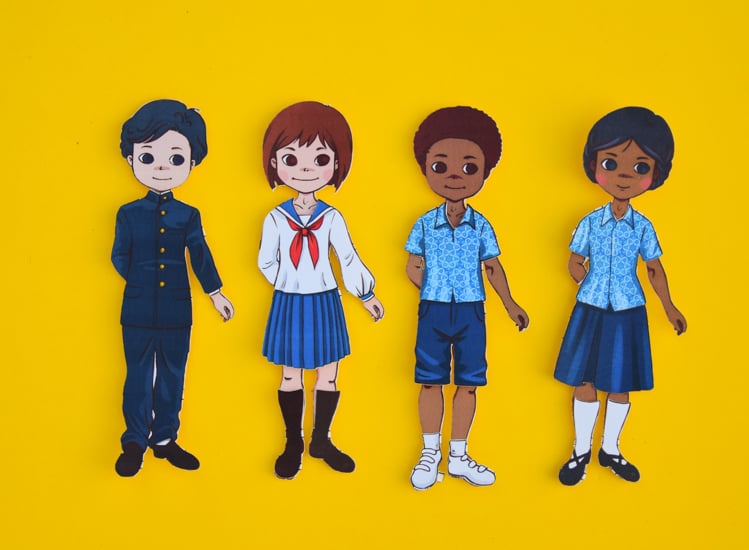
The school uniform of Japan is on the left, and the school uniform of Indonesia is on the right.
Indonesia surprised me with several types of standardized uniform worn, based on the day of the week. Most days, the students are required to wear a white shirt and a pair of pants or a skirt to school – the colour of the latter depends on the grade. However, once a week, most schools have a school identity uniform day. Thus uniform includes a shirt made from school-specific batik-patterned fabric. Batik is a traditional Indonesian technique of wax-resist dyeing applied to whole cloth. In addition to this, most schools also have another day a week dedicated to wearing a brown scout uniform.
In Japan, both of the uniforms in the picture are based on naval uniforms of the early 20th century. Junior high schools often choose sailor outfits as uniforms for girls, while many (though by no means all) high schools prefer the Western-style plaid skirts and blazers. Japanese uniforms across the country are similar in style, but have different details, so each school uniform is unique.
School Uniforms in China and Cuba
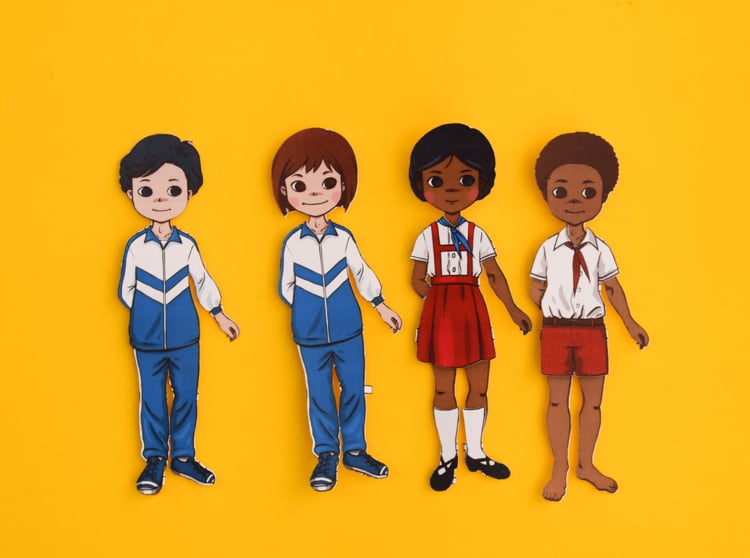
The school uniform of China is on the left, and the school uniform of Cuba is on the right.
Most school uniforms in China consists of five sets of clothes: there are two sets of formal clothes (for summer and for winter) and three sets of everyday clothes (for summer, for winter and for fall/spring). The formal clothes look similar to the ones worn in many other countries—white shirts and pants for boys and white blouses and skirts/pinafore for girls— but they are not worn very often. Most days of the year, Chinese students wear a sport suit to school! According to the students, it is cozy and comfortable and helps them to easily integrate physical exercises into their vigorous learning programs.
A noticeable part of the Cuban standardized school uniform is the neckerchief. It signifies the belonging to the Cuban pioneer youth organization. The two colors of the neckerchiefs—blue and red–belong to two different stages of participation in the youth group. Junior members wear blue, and older members wear red. Later on, students switch to wearing a badge instead of a neckerchief.
School Uniforms in Sri Lanka and Uruguay
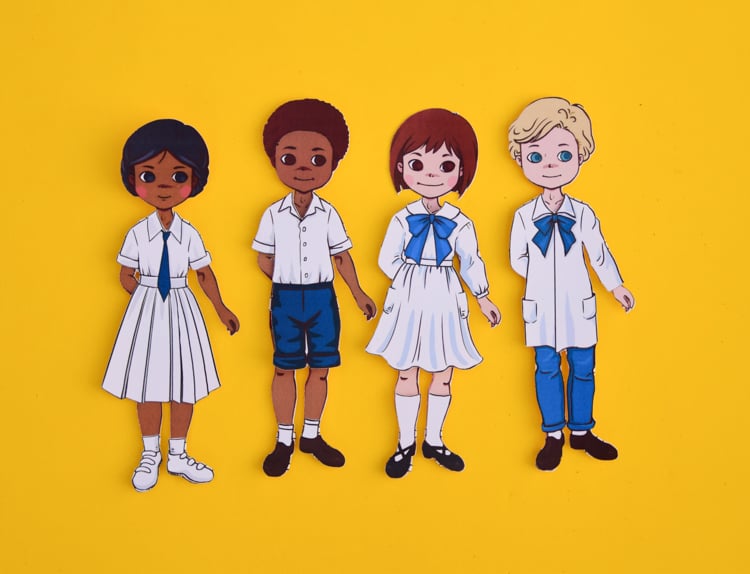
The school uniform of Sri Lanka is on the left, and the school uniform of Uruguay is on the right.
Schools in Uruguay require every child to wear a white smock with a blue bow. The smocks for boys look somewhat like lab coats, and for girls – like pinafores. They cover the clothes worn underneath and discourage any unkind comments about their brand, quality, or level of maintenance. At the beginning of the 20th century when the uniform was designed, it was supposed to make all the children feel equal at school. While the idea seems practical in many ways, I couldn’t help but wonder how many of these white smocks a kid dirties in one week! Please, let me know if you have any insight.
In Sri Lanka, white is also the preferred colour for the school uniforms. Boys wear a white shirt with navy blue or white shorts until they are fifteen. Afterwards, they change to white trousers. Girls wear a one-piece white dress, and white shoes are also often required.
>>> Get the Paper Dolls Here! <<<
If you make paper dolls, do share your photos with us! We love seeing them. You can post them on our Facebook page, email me or tag us on Facebook or Instagram – @adventureinabox!
More Paper Dolls
Amazing Women in History Paper Dolls
Using these paper dolls, dedicated to social history and women’s history, children will learn about twenty amazing heroines who changed the world! Featuring Frida Kahlo, Marie Curie, Florence Nightingale, and many more.
Anatomy Paper Dolls
Study the human body anatomy with kids by making a set of printable anatomy paper dolls, with each layer showcasing a different body system!
Black History Paper Dolls
Celebrate Black history while making a set of printable dress-up and magnetic paper dolls of fifteen inspiring people who changed the world!
Christmas Around the World Paper Dolls
Learn about Christmas traditions around the world with fourteen gift-bringing characters from different cultures! From the famed Santa Claus to the mysterious Olentzero, from the sweet Christkind to the horrifying Krampus—the world is full of interesting and unique traditions, associated with the season.
Mermaid Paper Dolls
Enchanting mermaid live under the sea in fairy-tales and children's imagination, and they can make them from paper, using these printable templates!
Pirate Paper Dolls (Free!)
Dress up these free printable paper dolls as pirates and throw a pirate party for kids!
Autumn and Spring Paper Dolls (Free!)
Get these printable paper dolls ready for a change of seasons with a free set of colourful spring/autumn clothes!
Back to School Paper Dolls
For a back-to-school celebration, make a set of printable paper dolls with a wardrobe that will take them through a school year!
Emotion Paper Dolls: Female
Instead of clothes, this printable emotion paper doll changes poses and expressions and teaches children how to successfully read other people’s body language.
Emotion Paper Dolls: Male
Instead of clothes, this printable emotion paper doll changes poses and expressions and teaches children how to successfully read other people’s body language.
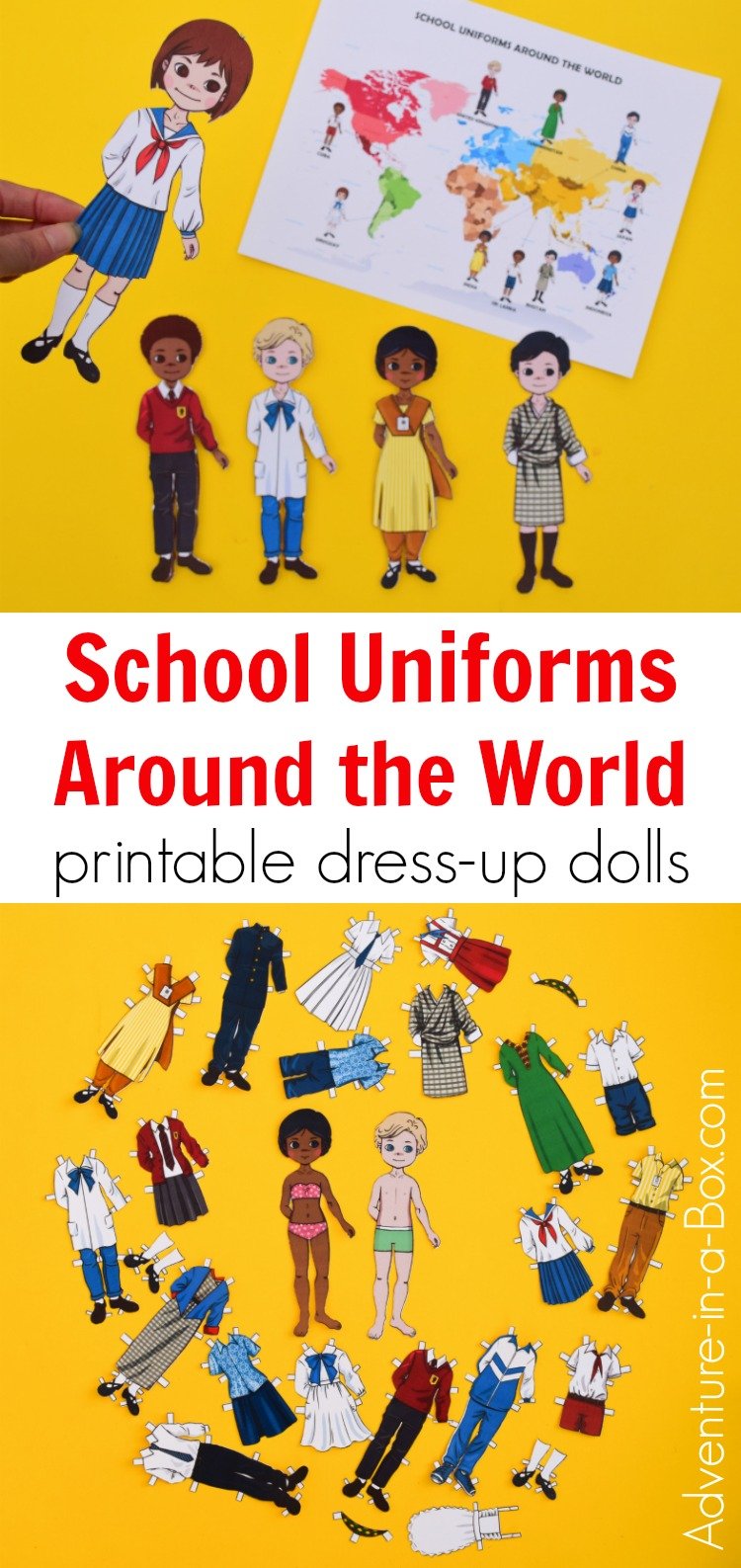

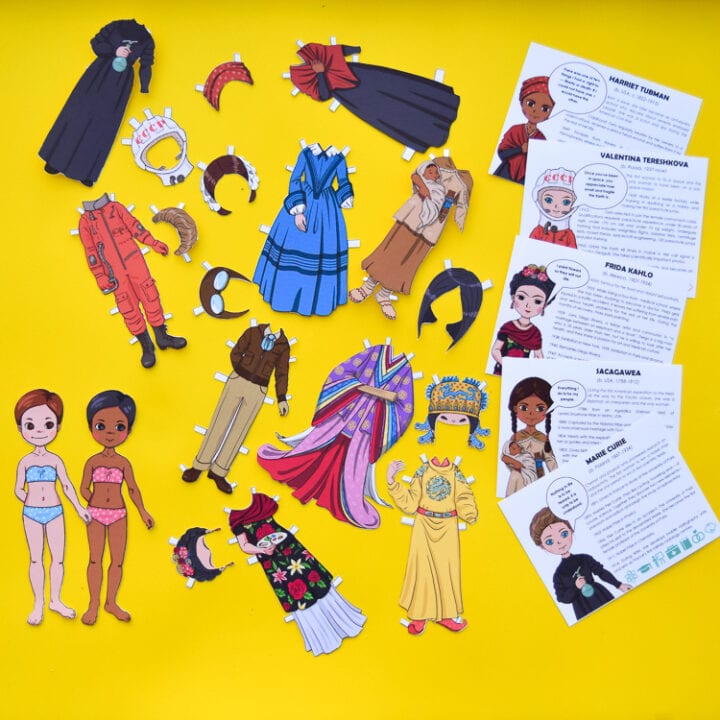
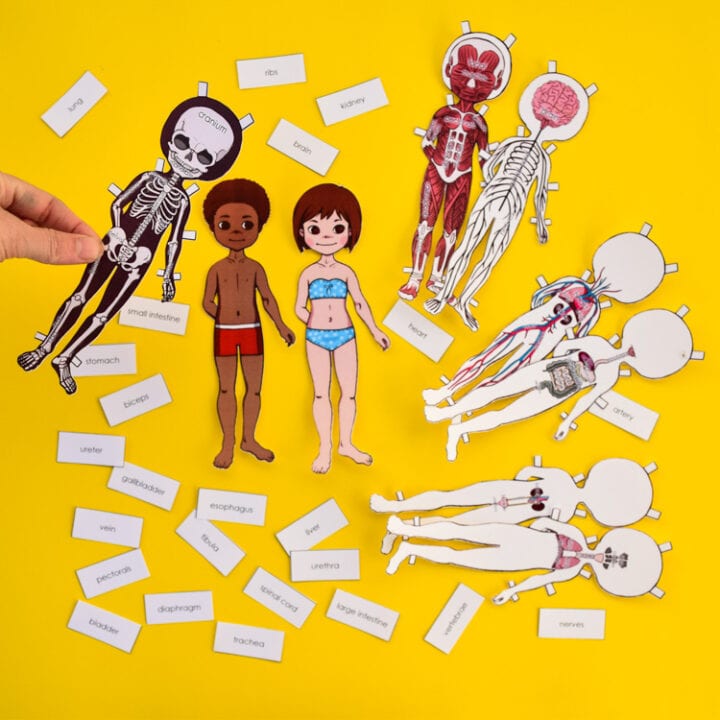

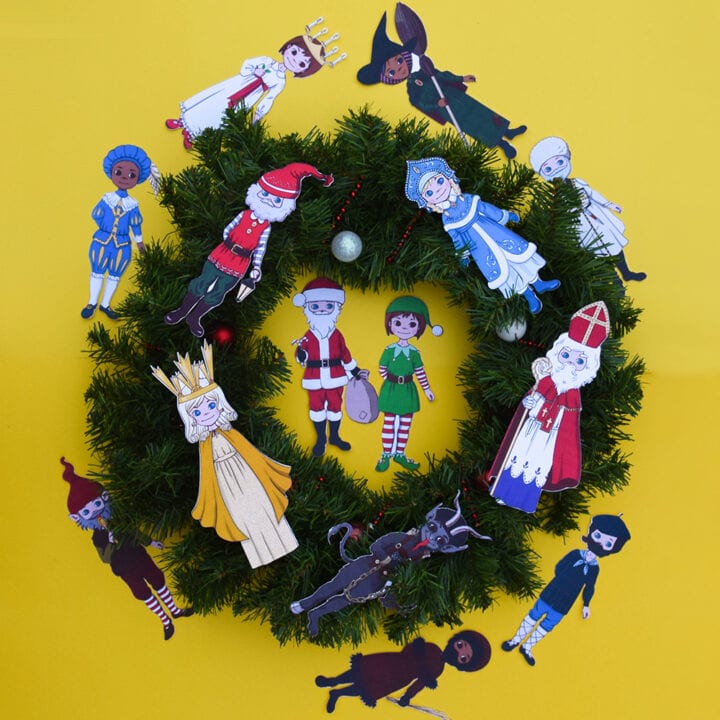
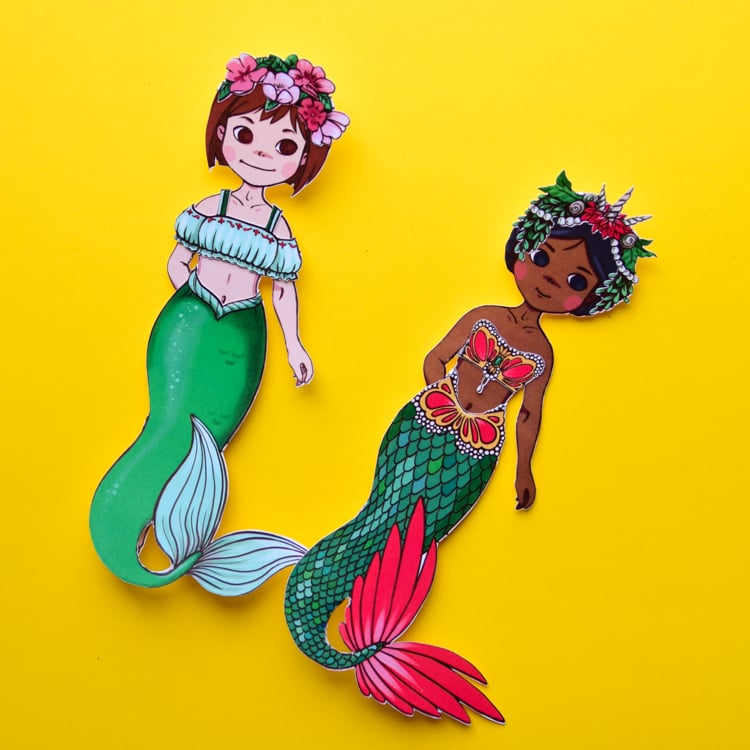
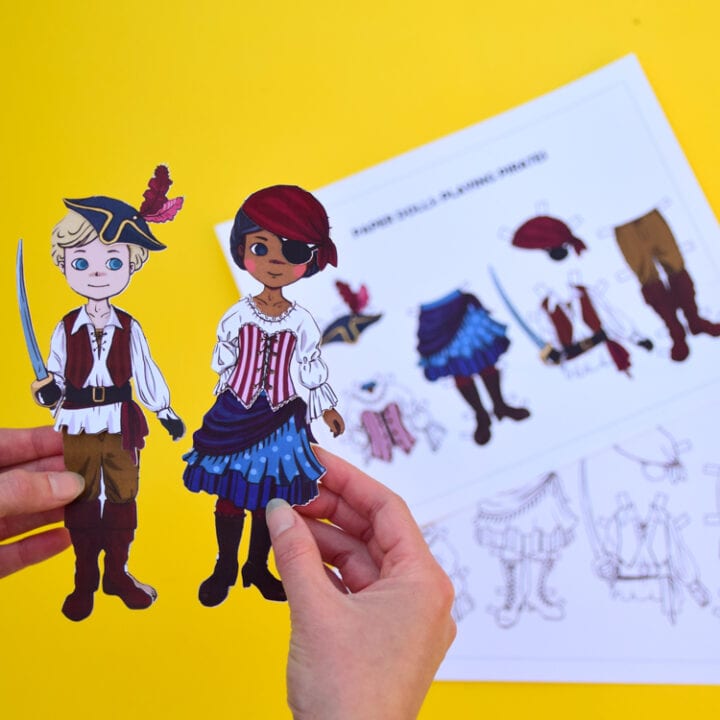
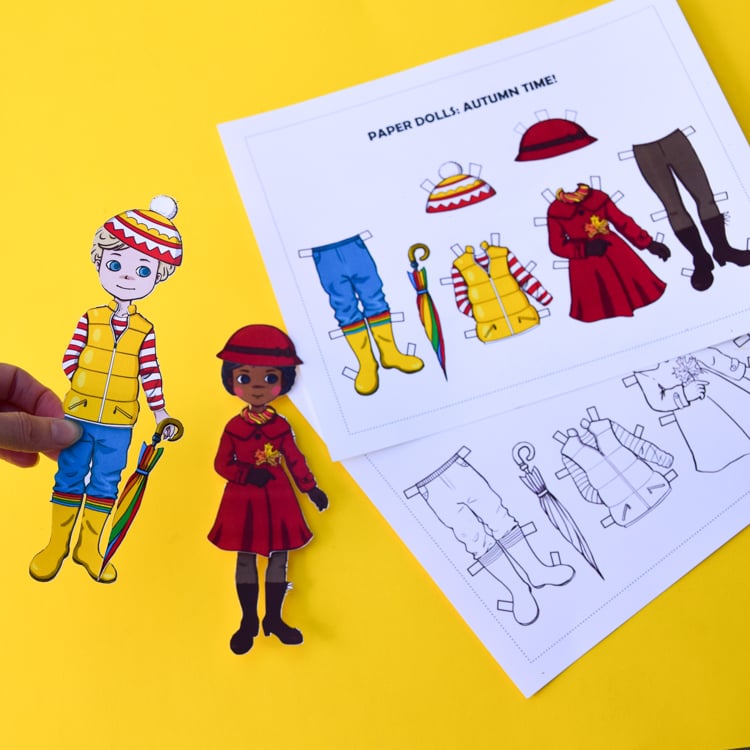
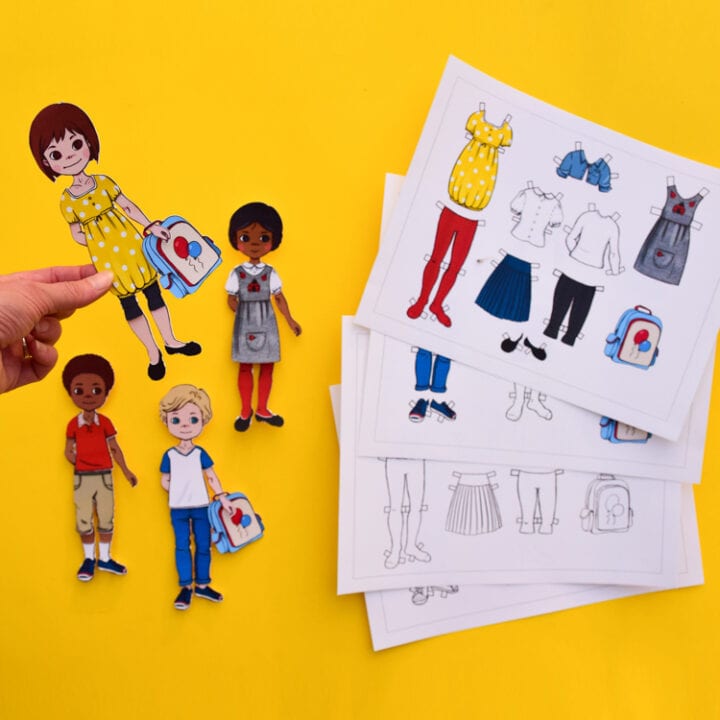

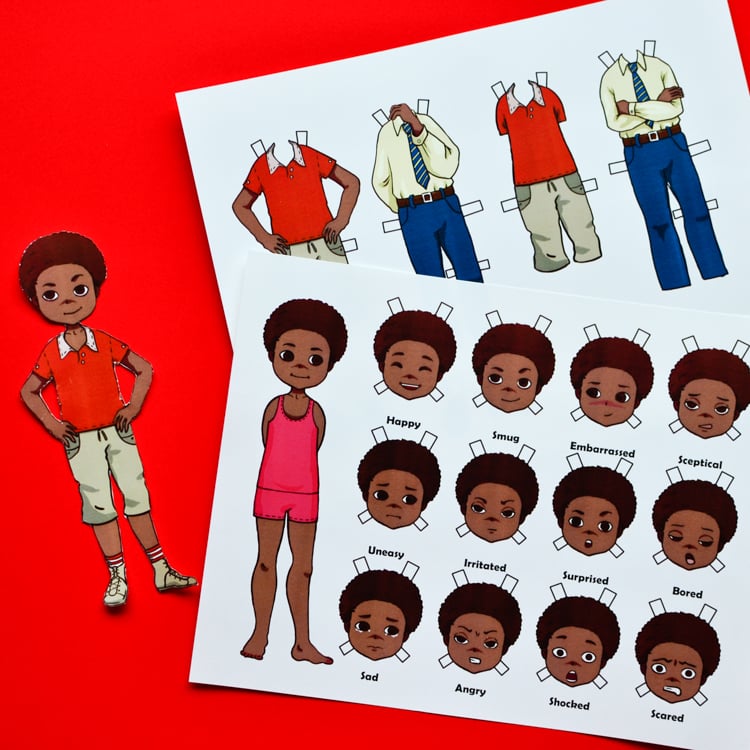







Thanks for the free printable.
God bless!